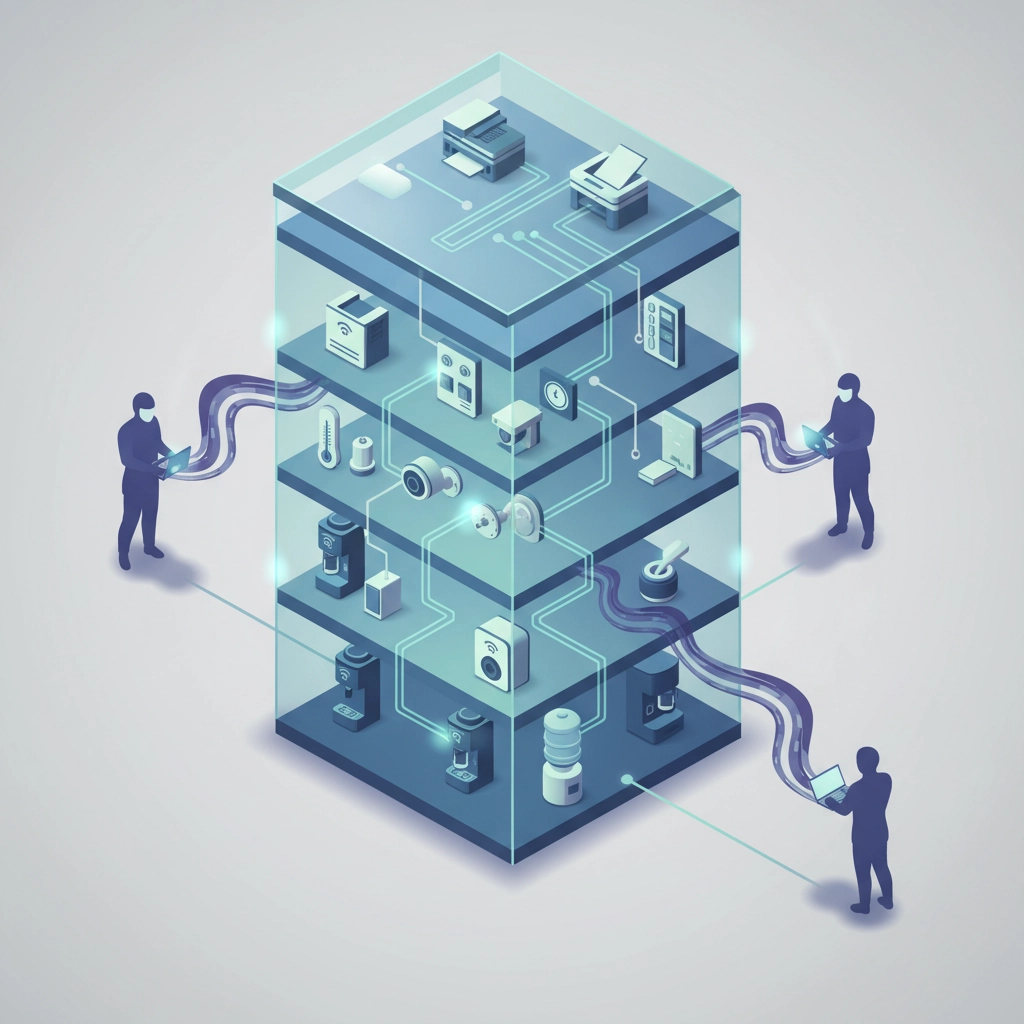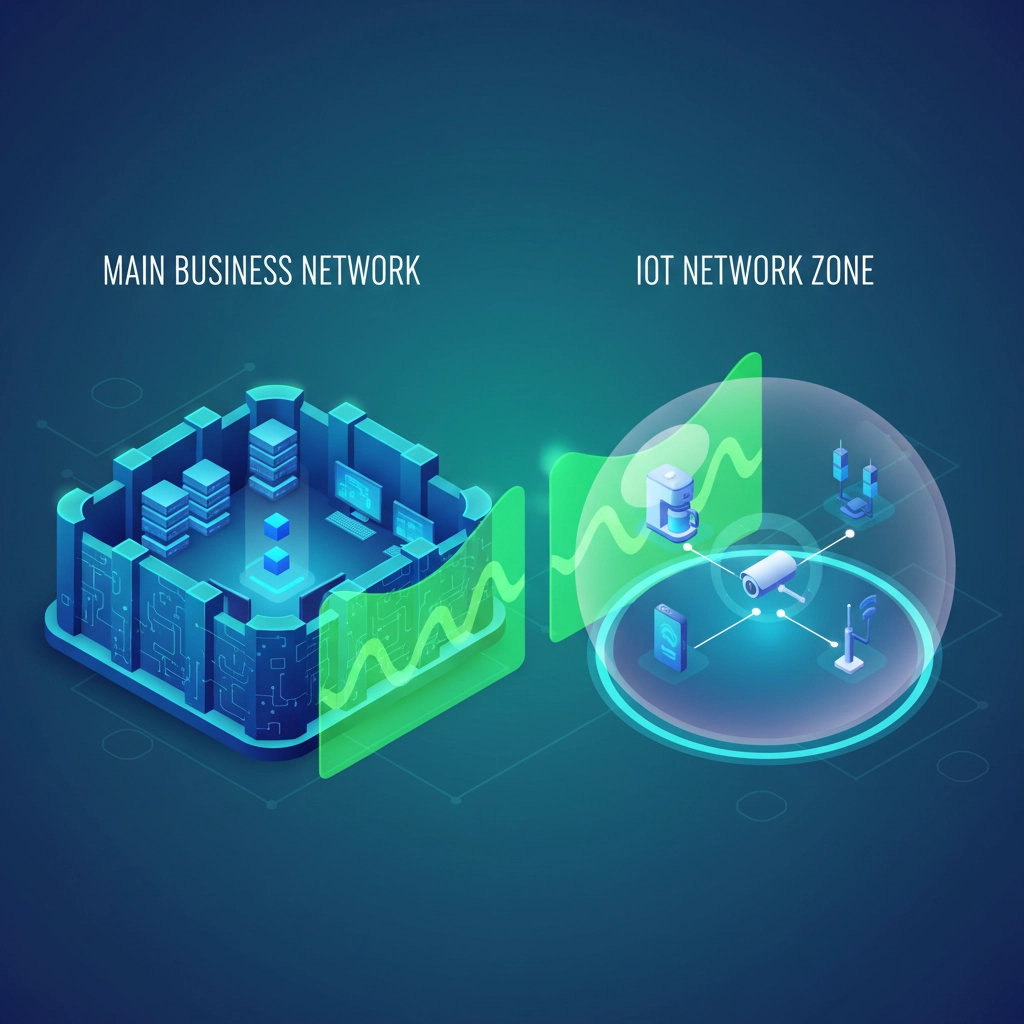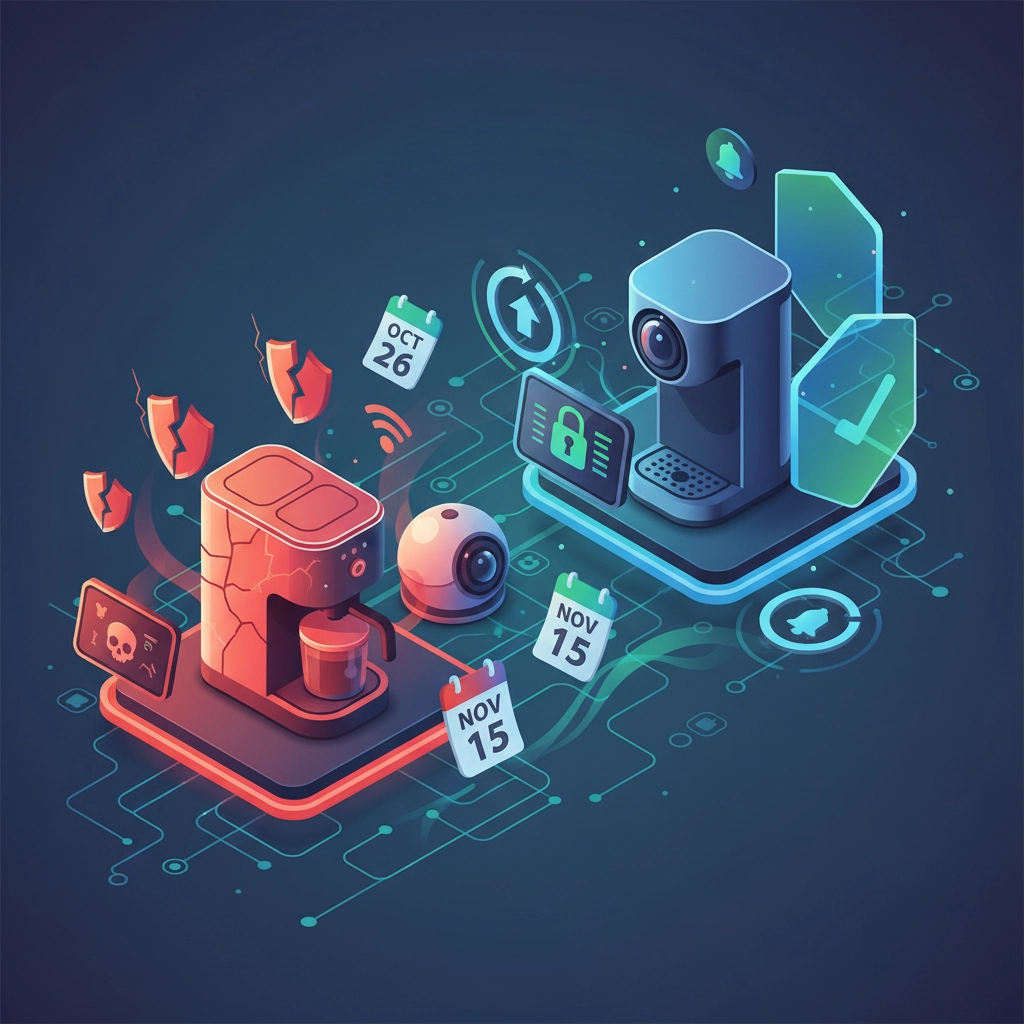That fancy smart coffee machine in your break room isn't just brewing your morning fuel, it might be brewing up a cybersecurity nightmare. Sounds crazy, right? But here's the thing: hackers have already used coffee machines to launch ransomware attacks that shut down entire factories. And if you think your small business is too small to be a target, think again.
The Internet of Things (IoT) market hit $384.7 billion in 2021, and smart devices are flooding businesses everywhere. From coffee makers and smart thermostats to security cameras and printers, these devices are creating a web of vulnerabilities that most business owners don't even know exists.
The scariest part? These devices can be compromised within minutes of connecting to the internet. Once hackers get in through your "innocent" coffee machine, they can potentially access your customer databases, financial records, and everything else on your network.
The Real-World Wake-Up Call
Before you dismiss this as tech paranoia, let's talk about Target. In 2013, hackers stole credit card details from over 41 million shoppers. How'd they get in? Through the company's air conditioning system. Yep, the HVAC system was the gateway to one of the biggest retail breaches in history.
More recently, a factory's entire control system got infected with ransomware that spread through, you guessed it, coffee machines. The machines were supposed to be on an isolated Wi-Fi network, but they were incorrectly connected to the main system instead. Operations shut down until the mess was sorted out.

The 7 Deadly IoT Security Sins
1. Treating Smart Devices Like Dumb Appliances
Most business owners buy a smart coffee machine the same way they'd buy a regular one, plug it in and forget about it. But that smart device is essentially a computer that happens to make coffee, and it needs the same security attention as your laptop.
The Fix: Treat every IoT device like a potential entry point. Before you buy, research the manufacturer's security practices and look for devices with security certifications. It's worth paying a premium for properly secured devices, 69% of business leaders are already doing this.
2. Using Default Passwords (Or No Passwords at All)
Here's a fun fact: many IoT devices ship with passwords like "admin" or "123456." Some don't even require passwords to access their settings. It's like leaving your front door wide open with a sign that says "Welcome, Burglars!"
The Fix: Change every default password immediately. Use strong, unique passwords for each device, and enable two-factor authentication if available. Yes, it's a pain, but so is explaining to customers why their data got stolen through your coffee maker.
3. Connecting Everything to Your Main Network
This is the big one. Most businesses plug IoT devices straight into their main network, giving hackers a direct highway to sensitive data. It's like inviting a stranger into your living room and handing them the keys to your safe.
The Fix: Create a separate network just for IoT devices. Use VLANs or set up a completely separate Wi-Fi network. This way, if your coffee machine gets hacked, the damage stays contained.

4. Ignoring Updates and Patches
Unlike your computer, IoT devices don't usually update themselves. That security patch that fixes a critical vulnerability? It's probably sitting on the manufacturer's website while your device remains exposed.
The Fix: Set up a monthly schedule to check for firmware updates on all your devices. Create a spreadsheet or use device management software to track when each device was last updated. Some newer devices offer automatic updates: enable this feature when available.
5. Giving Everyone Access to Everything
Many businesses let any employee control IoT devices from their phones or computers. While it's convenient to let anyone adjust the thermostat or check security cameras, it also means you have dozens of potential weak points.
The Fix: Implement role-based access controls. Only give employees access to devices they actually need for their jobs. Use strong authentication for device access, and regularly review who has access to what.
6. Flying Blind on Device Activity
Without proper monitoring, you have no idea what your IoT devices are doing. Are they sending data where they shouldn't? Have they been compromised? You won't know until it's too late.
The Fix: Use network monitoring tools to track unusual traffic patterns from IoT devices. Set up alerts for suspicious activities like devices communicating with unknown servers or generating unexpected amounts of network traffic.

7. Losing Track of Your Digital Assets
Quick question: can you name every internet-connected device in your office right now? Most business owners can't. Hidden devices like smart plugs, printers with Wi-Fi, or even digital picture frames create blind spots in your security.
The Fix: Conduct a complete device audit. Walk through your office and document every connected device, no matter how small. Include details like device type, location, last security update, and current security settings. Update this inventory quarterly.
Why This Matters More Than Ever
The average cost of a data breach hit $4.35 million in 2022. For small businesses, a single incident could be the end of the road. But here's the silver lining: 75% of business leaders now prioritize security more than they did last year, with security spending up 15%.
The key is being proactive rather than reactive. Every day you wait to secure your IoT devices is another day hackers have to find and exploit vulnerabilities.
Your 15-Minute Action Plan
Don't let this overwhelm you. Here's what you can do right now:
Next 5 minutes:
- Walk around your office and list every device connected to the internet
- Check if any devices are still using default passwords
This week:
- Create a separate guest network for IoT devices
- Change all default passwords
- Research and implement a network monitoring solution
This month:
- Set up a regular update schedule for all devices
- Review and restrict device access permissions
- Consider hiring a cybersecurity professional for a complete assessment

Remember, cybersecurity isn't just about protecting data: it's about protecting your reputation, your customers' trust, and your business's future. The convenience of smart devices doesn't have to come at the cost of security if you implement proper safeguards from the start.
Your coffee machine might seem harmless, but in the wrong hands, it could be the key to your entire digital kingdom. Don't let a $200 appliance become a million-dollar mistake.
Ready to secure your business from IoT threats? Contact B&R Computers today for a comprehensive cybersecurity assessment. Our experts will identify vulnerabilities in your current setup and create a customized security plan that protects your business without slowing you down. Get your free security consultation and sleep better knowing your smart devices are actually smart about security.




































































































